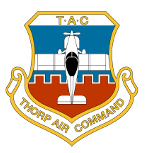 |
Thorp Air Command - T18.netSupporting Owners, Builders and Pilots of the Thorp T-18 and its variants. |
 |
| It is currently Fri Apr 19, 2024 5:11 pm |
 |
Thorp Air Command - T18.netSupporting Owners, Builders and Pilots of the Thorp T-18 and its variants. |
 |
| It is currently Fri Apr 19, 2024 5:11 pm |
|
All times are UTC - 6 hours [ DST ] |
 
|
Page 1 of 1 |
[ 8 posts ] |
|
| Author | Message | ||||
|---|---|---|---|---|---|
| Jim Mantyla |
|
||||
Joined: Wed Oct 21, 2009 6:57 pm Posts: 228 Location: Barrie, Ontario,Canada |
|
||||
| Top | |
||||
| TonyNZ |
|
|||||
Joined: Thu Oct 22, 2009 10:25 pm Posts: 105 Images: 8 Location: New Zealand |
|
|||||
| Top | |
|||||
| James Grahn |
|
||||
Joined: Sat Oct 24, 2009 7:16 pm Posts: 1435 Images: 0 Location: USA |
|
||||
| Top | |
||||
| flyingfool |
|
||||
Joined: Wed Aug 06, 2014 11:01 am Posts: 220 Images: 7 |
|
||||
| Top | |
||||
| jrevens |
|
|||||
Joined: Thu Oct 22, 2009 10:13 pm Posts: 789 Location: USA |
|
|||||
| Top | |
|||||
| thorpdrvr |
|
||||
Joined: Wed Oct 21, 2009 12:35 pm Posts: 103 Images: 4 Location: USA |
|
||||
| Top | |
||||
| lance38dt |
|
||||
Joined: Thu Aug 05, 2010 3:22 pm Posts: 143 Images: 0 Location: USA |
|
||||
| Top | |
||||
| jrevens |
|
|||||
Joined: Thu Oct 22, 2009 10:13 pm Posts: 789 Location: USA |
|
|||||
| Top | |
|||||
 
|
Page 1 of 1 |
[ 8 posts ] |
|
All times are UTC - 6 hours [ DST ] |
Who is online |
Users browsing this forum: No registered users and 9 guests |
| You cannot post new topics in this forum You cannot reply to topics in this forum You cannot edit your posts in this forum You cannot delete your posts in this forum You cannot post attachments in this forum |